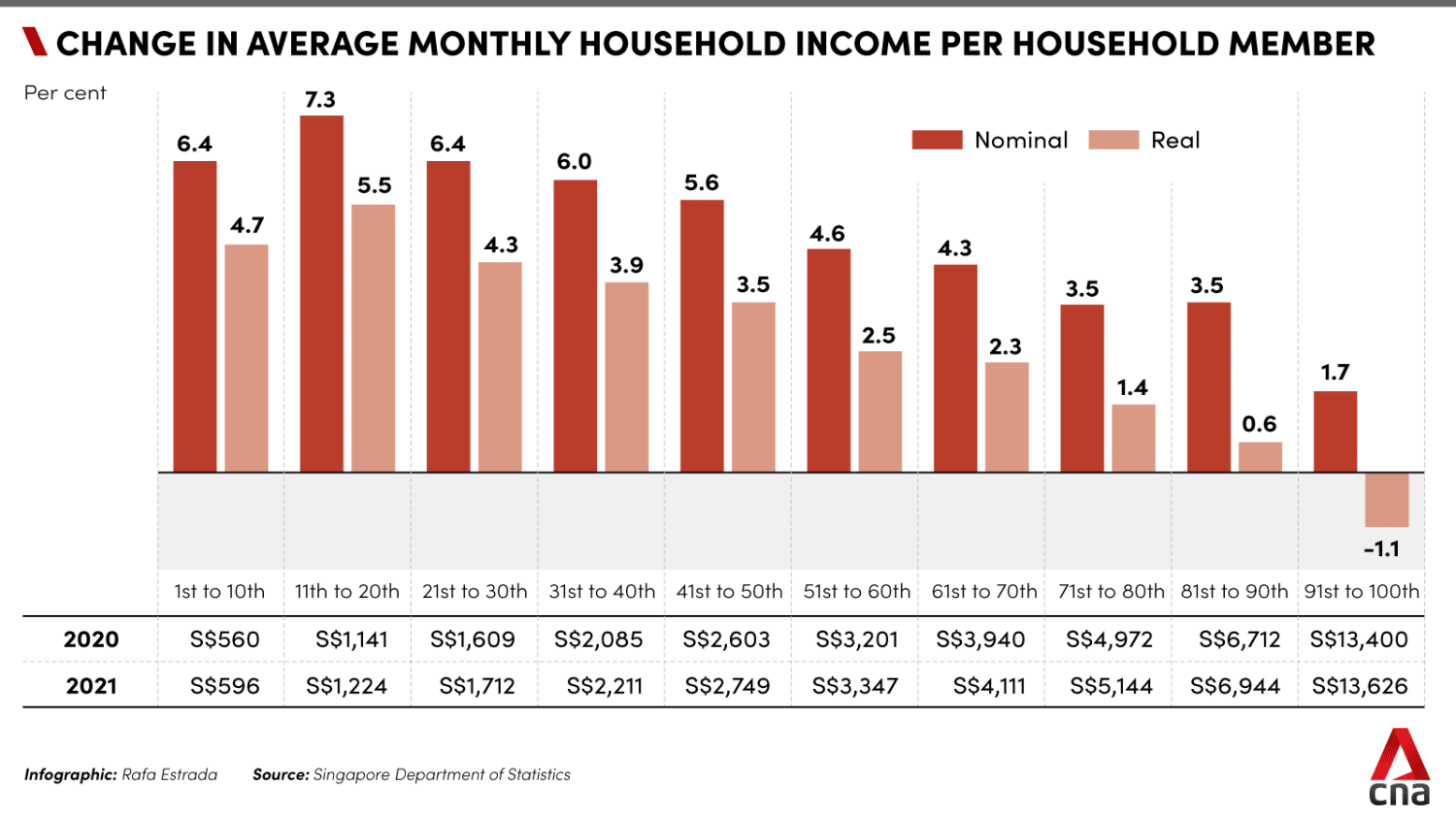Median monthly household income rose in 2021, surpassing pre-pandemic levels: SingStat
SINGAPORE: Median monthly household income from work among resident employed households rose 3.6 per cent last year, surpassing pre-pandemic levels, the Singapore Department of Statistics (SingStat) said on Tuesday (Feb 15).
According to a paper released by the department on Tuesday, the median monthly household income from work for such households was S$9,520 in 2021, up from S$9,189 the previous year.
After adjusting for inflation, the median monthly household income from work rose 1.5 per cent in real terms in 2021.
From 2016 to 2021, median monthly household income from work of resident employed households increased 4.2 per cent cumulatively, or 0.8 per cent per year in real terms.
A resident employed household refers to a household where the reference person is a Singaporean or permanent resident, and with at least one employed person.
The median monthly household income from work per household member rose from S$2,886 in 2020 to S$3,027 in 2021, an increase of 4.9 per cent, or 2.8 per cent after adjusting for inflation.
From 2016 to 2021, the median monthly household income per household member grew by 13.4 per cent cumulatively or 2.5 per cent per annum in real terms, SingStat said.
Resident households, including those with no employed person, received S$5,096 per household member on average from various government schemes in 2021.
This was less than the S$6,324 received the year before, due to the ending of one-off schemes introduced in 2020 to cushion the impact of COVID-19, SingStat said.
Resident households staying in one- and two-room Housing Board (HDB) flats received S$11,363 per household member on average from government schemes, more than double the transfers received by resident households staying in HDB three-room flats.
Related:
INCOME INEQUALITY FELL
Household income inequality fell in 2021, before accounting for government transfers and taxes.
The Gini coefficient, based on the household income from work per household member, was 0.444 last year, lower than 0.452 in 2020 and 2019.
The Gini coefficient measures the degree of inequality of income distribution. It is equal to zero in the case of total income equality and to one in the case of total inequality. The more unequal the income distribution, the large the Gini coefficient would be.
After adjusting for government transfers and taxes, the Gini coefficient in 2021 fell from 0.444 to 0.386, the second lowest level since the start of the series in 2000.
"Nonetheless, this was an increase from the Gini coefficient of 0.375 in 2020, which was the lowest on record, due to the cessation of one-off schemes introduced in 2020 to cushion the impact of the COVID-19 pandemic," said SingStat.
INCOME GROUPS
The average household income from work per household member increased by 1.7 to 7.3 per cent in nominal terms for resident employed households in all income groups.
"After adjusting for inflation, households in the (1st to 90th percentile) saw real income growth of 0.6 to 5.5 per cent," SingStat said.
Households in the 91st to 100th percentile saw a real income decline of 1.1 per cent.
Between 2016 and 2021, average household income from work per household member among resident employed households in all income groups rose by 0.4 to 2.6 per cent per annum in real terms.

Not all households are consistently in the same decile group from one year to the next, said SingStat.
For example, a household may move down from a higher decile in a particular year due to the temporary unemployment of a household member, before moving up the deciles when the member resumes work in the subsequent year, the department added.
"In comparing the performance of any particular decile group over time, it is therefore relevant to note that the comparison may not pertain to the same group of households," it said.





